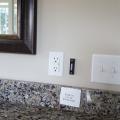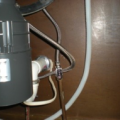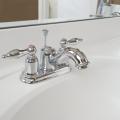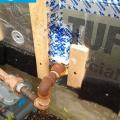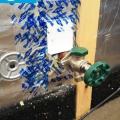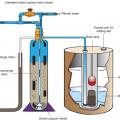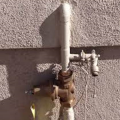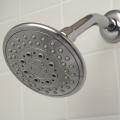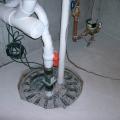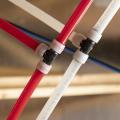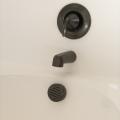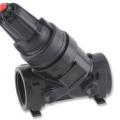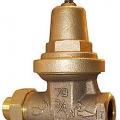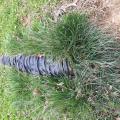Showing results 1 - 21 of 21
A push button operates the on-demand hot water circulation pump in this master bathroom.
During drought periods, an integrated back-up system adds city water to maintain the Durable Energy home’s 11,500-gallon cistern at 25% capacity or more.
Hot and cold water hose connections and valves are common sources of leaks at kitchen and bathroom faucets.
Properly install all water-using fixtures, equipment, and appliances such that there are no leaks.
Right - Pressure reducing valves installed outside the home reduce water pressure before water is distributed to fixtures.
Right - The pipe penetration is properly flashed and furring strips are installed on each side in preparation for installing cladding
Right - The water and air control layers are properly integrated around the hose bib
Right - This water softener filters hard water through a mineral-collecting medium before delivering water to the main plumbing system.
Right - Water pressure reducing valves should be installed prior to fixture piping such as where water enters the home.
Showering accounts for 1.2 trillion gallons of water per year in the United States.
The pipe connections for faucets, dishwashers, garbage disposals, and other water using appliances can be a source of leaks.
The shower diverter in bath/shower combinations is one of the common sources of leaks in tub faucets.
Threaded connections are one source of leaks in showerheads and showerhead arms.
Water pressure reducing valves decrease water pressure entering a home to decrease water usage and improve fixture and appliance performance.
Water pressure reducing valves decrease water pressure entering a home to decrease water usage and improve fixture and appliance performance.
Wrong - Exterior drain pipe is exposed and thus subject to being crushed; also it has been allowed to fill with dirt and may be clogged, preventing perimeter drain pipe or downspouts from draining.
